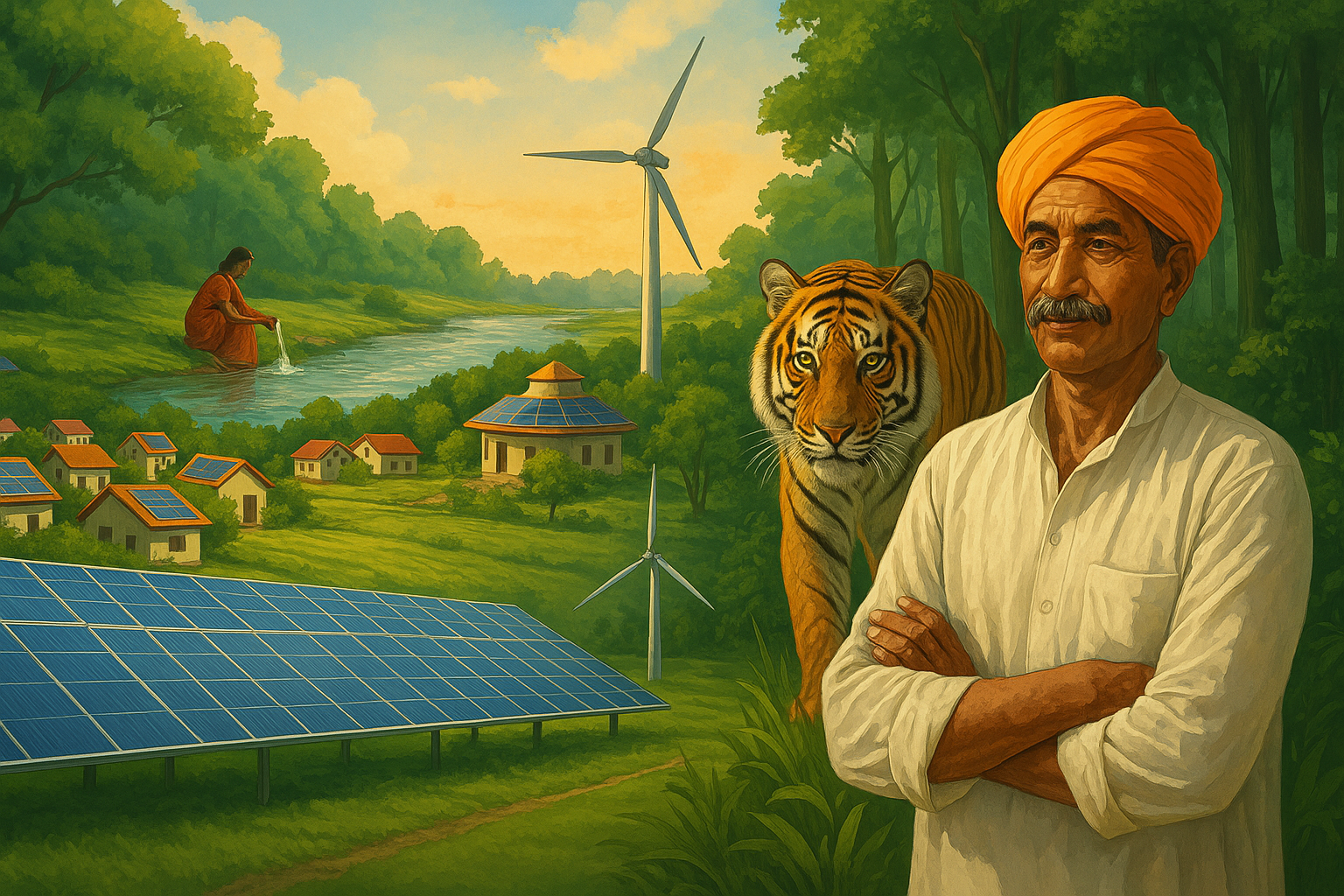From Slogans to Solar Villages: How India’s Green Revolution is Reshaping the Planet

New Delhi – Once criticized for its sluggish response to the climate crisis, India is now scripting an extraordinary transformation—one that merges ancient ecological wisdom with cutting-edge policy and technology. Under the stewardship of Prime Minister Narendra Modi over the past 11 years, the country has redefined its climate identity, pivoting from passive participant to formidable climate champion on the global stage.
The changes are not merely statistical—they are structural, cultural, and emotional. With its renewable capacity surging, forest cover expanding, rivers being revived, and communities being electrified through solar energy, India is arguably undergoing the most inclusive and diversified environmental overhaul in its modern history.
A Global Climate Actor, Reborn
India's transformation began at the Paris COP21 in 2015 and has only accelerated since. By achieving its 2030 target of 40% non-fossil fuel-based electricity capacity nearly a decade early—in 2021—the country silenced skeptics. At COP26 in Glasgow, PM Modi’s “Panchamrit” pledge and launch of LiFE (Lifestyle for Environment) reframed the climate debate around individual responsibility.
At COP29 in Baku last year, India presented itself not only as a climate victim but also as a solution-provider—showcasing disaster-resilient infrastructure with Sweden, championing solar energy with the International Solar Alliance, and foregrounding women-led climate action in collaboration with NRDC.
A Renewable Renaissance
India’s numbers speak volumes. In the financial year 2024–25 alone, the country added a record-breaking 29.52 GW in renewable energy, pushing total installed capacity to 223.6 GW. Solar power—once considered aspirational—is now mainstream, with installed capacity soaring from a humble 2.82 GW in 2014 to an impressive 107.9 GW.
Solar tariffs have plummeted by 65%, making them the world’s cheapest. Rooftop solar is no longer a niche market: schemes like PM Surya Ghar: Muft Bijli Yojana have reached nearly 12 lakh low-income households, offering digital ease and economic relief.
Wind energy now powers over 51 GW, with nuclear energy too seeing expansion, targeting a bold 100 GW capacity by 2047.
The Heartbeat of Rural India: Clean, Green, Empowered
Perhaps most moving are the changes felt in rural India. The PM-KUSUM scheme has solarized agriculture by providing subsidies for solar-powered irrigation pumps, reducing farmers’ dependence on erratic electricity grids and costly diesel.
In every district, the government is setting up model solar villages—an audacious plan to decentralize energy and champion local self-reliance. Meanwhile, GOBARdhan is converting cattle dung into energy, building biogas plants, and offering livelihood opportunities in forgotten hamlets.
Conservation: Tigers, Trees, and the Triumph of Life
India’s green mission isn’t confined to power plants and policies—it pulses through its forests and wildlands. The India State of Forest Report 2023 shows a rise in forest cover by nearly 17,000 km² since 2013. Carbon sinks have grown by 2.29 billion tonnes since 2005, nudging India closer to its NDC goals.
Wildlife conservation has produced extraordinary results. India now harbors over 75% of the world’s tigers—up to 3,682 as per the 2022 census. In a historic first, cheetah cubs were born on Indian soil in 2023 after their reintroduction through Project Cheetah, reviving a species long extinct in the region. Asiatic lions too have rebounded, aided by Project Lionin Gujarat.
Clean Rivers, Sacred Commitments
India’s rivers—long polluted and mourned—are witnessing rebirth. The Namami Gange Mission, launched in 2014, is more than a clean-up initiative; it is an emotional, spiritual, and ecological endeavor to revive the sacred Ganga. Waste treatment, solid waste management, and local community participation have rejuvenated once-toxic stretches of the river.
The Everyday Environmentalism of Millions
India’s green transformation is not confined to government offices or international summits—it lives in villages like Palli, India’s first carbon-neutral panchayat; in homes lit by LEDs distributed under the UJALA scheme; and in cities transitioning to cleaner public transport.
The country’s 13 Blue Flag beaches symbolize sustainable tourism, while eco-friendly ropeways to Kedarnath and Hemkund Sahib reflect how infrastructure can meet devotion without degrading the Himalayas.
Even emotionally resonant campaigns like “Ek Ped Maa Ke Naam”, launched by PM Modi on World Environment Day 2024, link personal loss to planetary care—142 crore trees planted not just as flora, but as memory.
The Road Ahead
India’s green journey is far from over. While progress is evident, so are the challenges: air pollution in cities, water scarcity in farmlands, and climate vulnerability in Himalayan regions. Yet the trajectory is clear—and it is upward.
By positioning sustainability at the core of policy, technology, spirituality, and livelihood, India offers a rare model of holistic development. The country isn’t just cutting emissions—it’s cultivating hope, responsibility, and resilience.
As the world races against time in the climate emergency, India’s metamorphosis offers something rare: a reason to believe that another way is possible—and already underway.




![From Kathmandu to the World: How Excel Students Are Winning Big [Admission Open]](https://www.nepalaaja.com/img/70194/medium/excel-college-info-eng-nep-2342.jpg)
